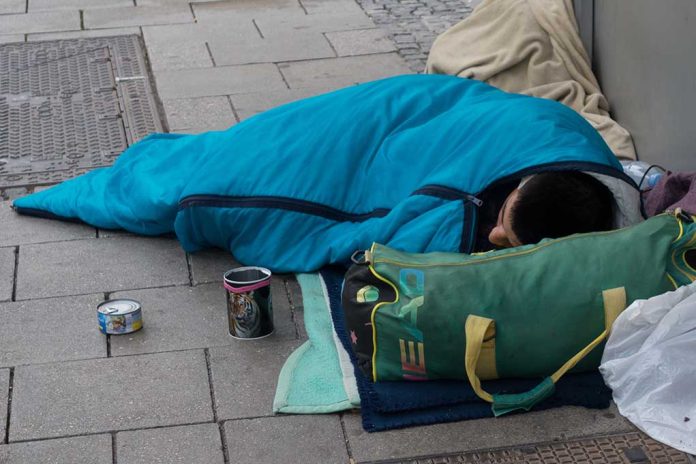
At a Glance
- Potential record-high 550,000 homeless people in the US in 2024
- Major urban centers like New York severely strained
- Migrant influx exacerbating homelessness crisis
- Democratic leaders face criticism over resource distribution strategies
- Massachusetts expects to spend over $1 billion on housing migrants
A Record-Setting Crisis
The United States is poised to encounter its highest levels of homelessness ever in 2024, significantly influenced by the migration of people to urban centers. Preliminary statistics from more than 250 organizations suggest an estimated 550,000 homeless individuals, reflecting a 10% increase from 2023. This uptick surpasses the previous record figures and signals an alarming trend. Major cities, particularly New York, face mounting pressure as they grapple with this crisis.
Illegal migrants have significantly contributed to these soaring numbers. Recent reports highlight that migrants make up a substantial portion of the homeless population in family shelters, especially in Massachusetts. The state expects to spend over $1 billion housing migrants this fiscal year, showcasing the dire need for effective resource allocation and policy reform. The migrant influx has been a critical factor in driving up these numbers, aggravating existing crises in housing availability and affordability.
Illegal migrants flooding the US are contributing to what could be the highest number of homeless in the country since the data was first recorded, with cities draining their coffers to fund shelters, a report says.
— News News News (@NewsNew97351204) September 22, 2024
Changing Urban Landscapes
Urban areas across America are bearing the brunt of the homelessness crisis. Chicago’s homeless population tripled to over 18,800 in January, while Denver saw a 42% increase attributed to the migrant influx. California remains the state with the largest homeless population in the US, reporting over 180,000 homeless in 2023. These figures underscore the urgent need for structural changes and local government support to manage the growing number of homeless individuals.
More than half of America’s homeless reside in the nation’s 50 largest cities. New York City and Los Angeles alone contain one-quarter of the country’s unhoused population. The influx of migrants has particularly strained these urban landscapes, complicating efforts to provide adequate shelter and support. The challenge of high rents and low incomes continues to be a primary driver, adding layers of complexity to effective policy implementation.
US homelessness explodes after hitting record last year as migrants flood streets https://t.co/FrZyNr2hUO pic.twitter.com/usHpt0JnXG
— New York Post (@nypost) September 22, 2024
Policy Debates and Criticism
The surge in homelessness has fueled contentious debates around resource distribution and immigration policy. Democratic leaders find themselves at the center of criticism for their strategies addressing these pressing concerns. The record-high number of homeless individuals has highlighted the inadequacies in existing policies and the urgent need for reform. Efforts to accommodate migrants sent from different states have only added to the strain on resources in major urban centers.
“[HUD estimates] are widely considered to be undercounts that can be swayed by how many volunteers show up or severe weather,” the Journal reported.
The ongoing debate over immigration policies plays a vital role in addressing homelessness. Critics argue that inadequate immigration policies have worsened the homelessness crisis, calling for immediate and effective measures to manage the influx of migrants. The challenge remains to balance humanitarian efforts with resource limitations, ensuring that all homeless individuals receive the support they need.
Sources:
US homelessness explodes after hitting record last year as migrants flood streets
State of Homelessness: 2024 Edition
Homelessness in America: Statistics, Analysis, and Trends
Homeless Lack of affordable housing economy
Homelessness Hits Record High, Straining Rescue Missions
Migrant surge makes U.S. housing crisis worse
Homelessness in the U.S. hit a record high last year as pandemic aid ran out
After Crisis of Unprecedented Migrant Arrivals, U.S. Cities Settle into New Normal













